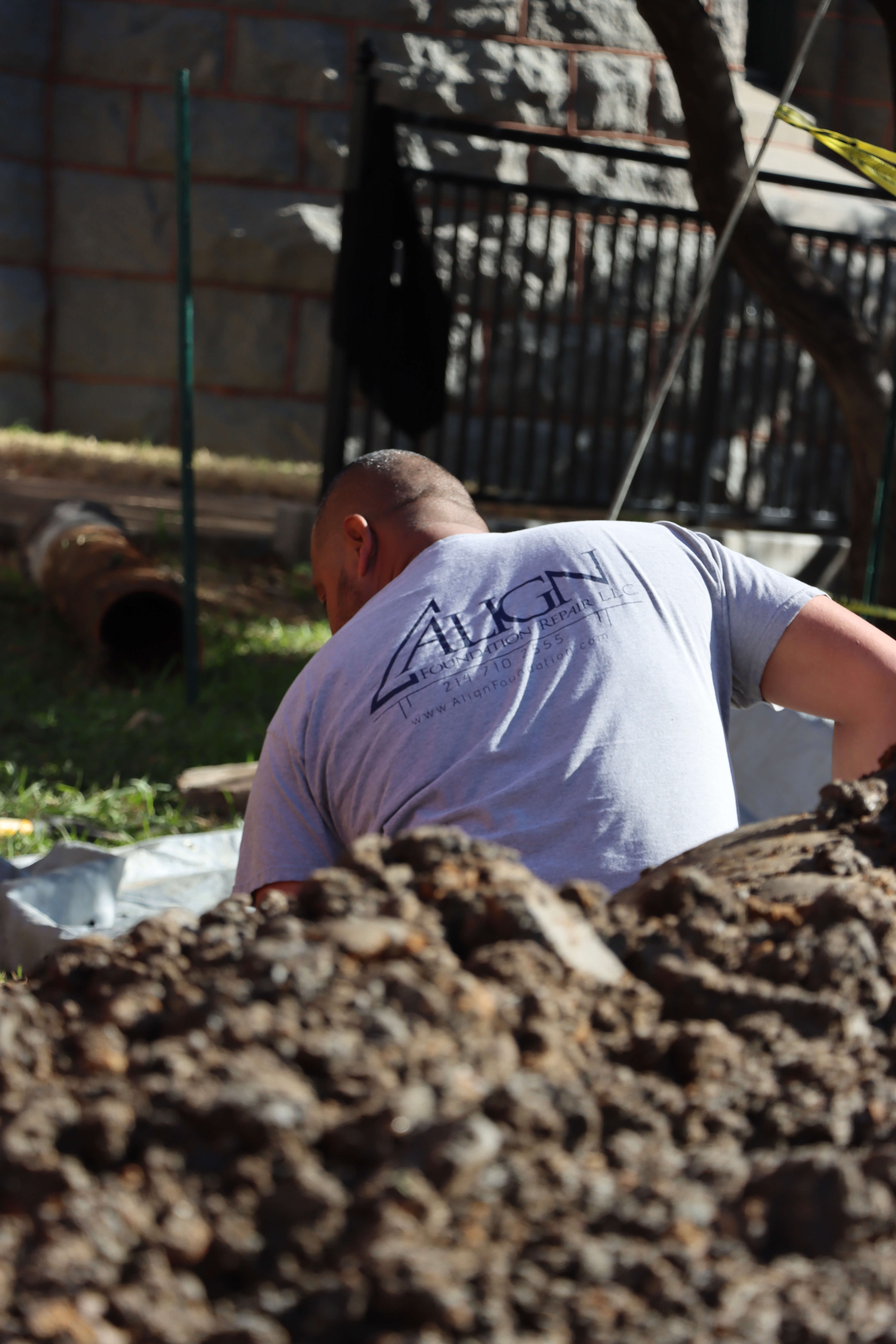It goes without saying that a foundation needs to be exceptionally sturdy. After all, it needs to bear the entire weight of a building and do so for decades and amidst everchanging outdoor elements. Over time, the concrete will slowly but surely show signs of damage. Steel foundation piers are one form of repair recommended by Align Foundation Repair and for good reason. Steel piers have become a mainstay for both residences and commercial structures due to their proven reliability and ease of installation.
Why Steel Piers?
Steel piers provide a stable base for a foundation and re-elevate the concrete that has settled or sloped at an uneven angle. Steel piers also support extremely heavy structures, such as public bridges and multi-floor apartment complexes.
Steel piers mainly fall into one of two categories: push steel piers and helical steel piers.
- Push Steel Piers – Consists of a set of hollow steel pipes driven into the soil using a hydraulic ram. The piers are driven way below to the depth of the load-bearing soil. Commonly used for supporting heavier loads.
- Helical Steel Piers – This variant involves steel pipes with plates attached at the end. You can think of them as giant screws; unlike push piers, they are screwed in as opposed to being hydraulically driven into the soil.
The Steel Pier Advantage
Align Foundation Repair often recommends steel piers as a long-term solution for existing foundations. The reason becomes clear when you learn of its many advantages.
For one, steel piers are able to remain stable over time. The stability and sturdiness also make the piers suitable for most soil types. The soil conditions in and around the Dallas-Fort Worth region are heavily clay-based. Clay soil is often a problem for foundations because of their susceptibility to contraction and expansion from moisture absorption.
Long-Term Solution That Doesn’t Cost an Arm and a Leg
Despite the insertion of heavy steel piers, modern technology allows the process to be done without heavy digging or exhumation around your property. Costs are also affordable. Steel piers are the most recommended solution in the construction industry. The long-term results also minimize the odds of future foundation repair costs.
Entrust Foundation Repairs to Align Foundation Repair
Foundation damage is often gradual. You can and should take action before the damage gets worse. Action on your end should include a call to Align Foundation Repair. We will send a technician to assess the degree of damage and outline a solution. Contact us today to learn more about the many uses of steel piers and to reverse the impacts of a settling or sloping foundation.





